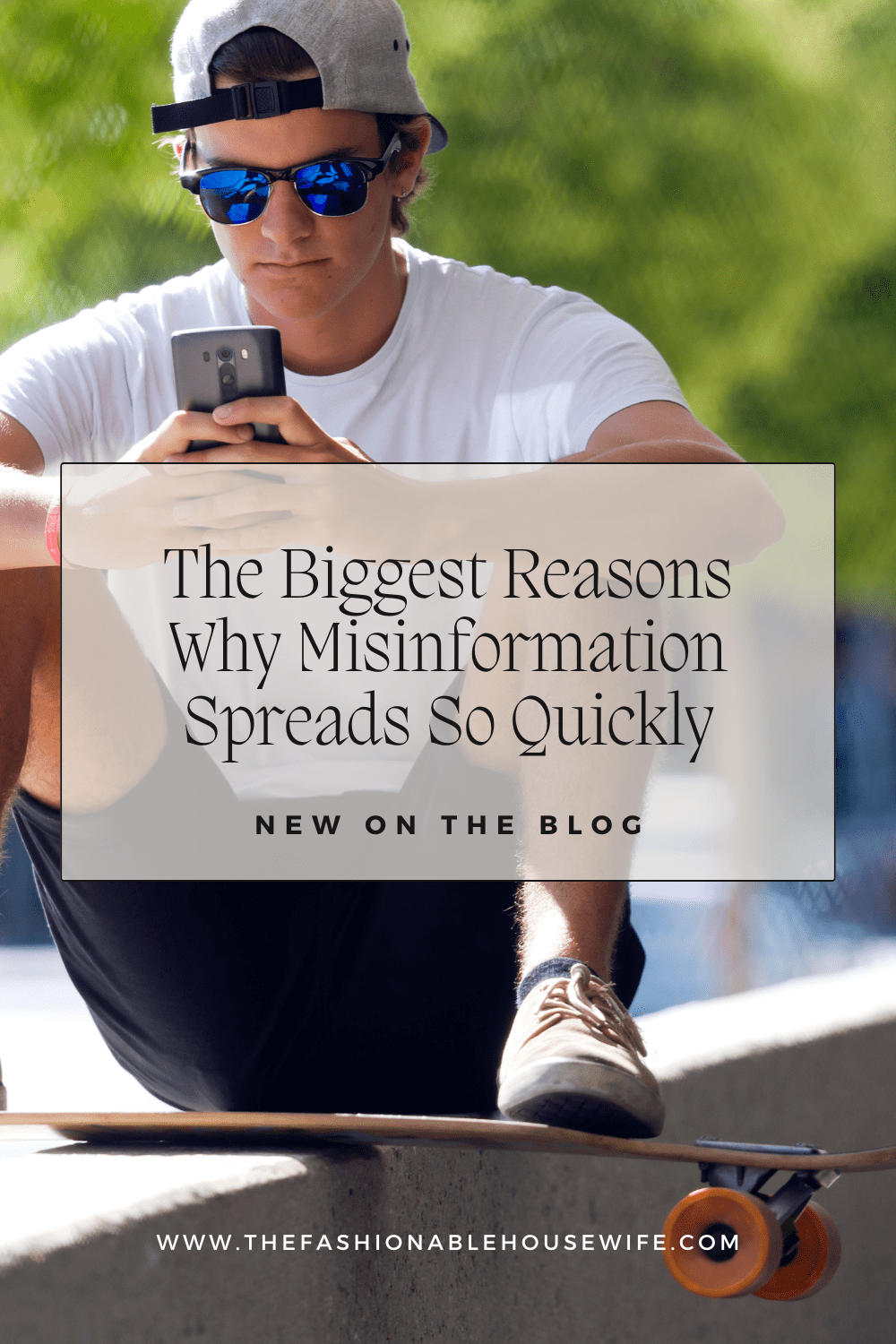The Biggest Reasons Why Misinformation Spreads So Quickly
*The views and opinions expressed in this article are those of the author and do not necessarily reflect the official policy or position of this website or its affiliates.

Misinformation comes in a variety of forms. Some forms of misinformation are based on outright lies, meant to function as propaganda or persuasive materials. Others are harder to notice, such as news outlets reporting on incidents before they have all the information.
Why does misinformation spread so quickly and harm so many people? And what can be done to curtail or address it?
Dealing With the Misinformation Problem
Misinformation is a rampant problem that affects us all in different ways. Sometimes, it has to do with perceived risks and new scientific information; a new study that suggests a newfound danger associated with a common substance may spread like wildfire, without people realizing the study was fabricated or misrepresented. In many cases, it has to do with recent events; if a police officer shoots and kills a suspect, the footage may circulate with a story that has little to do with reality.
Many individuals and organizations have made concentrated efforts to deal with the misinformation problem head on. The National Police Association, for example, attempts to present the facts associated with cases pertaining to police officers, dispelling myths and rumors that could otherwise color public perceptions. Major journalistic and fact-checking institutions have made similar efforts more broadly.
But if we’re going to solve or effectively fight the misinformation problem, we need to better understand its origins.
Why Misinformation Spreads So Quickly
These are just some of the reasons why misinformation seems to spread so quickly.
· The race to be first. Part of the problem is a generalized race to be first. The internet age has thrust us into an environment where everyone has unfettered access to information 24/7. News organizations must compete with each other to be the first to cover a major event, and even individual social media users often race to be the first to mention or comment on a developing story. There’s nothing wrong with wanting to report the news as it happens, but this intense pressure to be early means journalists and users are no longer as thorough as they used to be. Early information isn’t necessarily full information, yet people tend to make up their minds very quickly after hearing some new piece of information.
· Instant connection. Online connectivity also means instant connection. The moment someone uploads a video, it can be watched by other users. In a matter of minutes, it can spread to thousands of people. In less than a day, it can spread to millions. Oftentimes, this means the footage of a given event can circulate around the world long before a proper investigation reveals what actually happened.
· Entrenched beliefs. Entrenched beliefs also play a role in the spread of misinformation. People have a tendency to see and interpret the world through the lens of their established ideologies, and they don’t even realize it. If they have a preconceived notion that a certain group acts a certain way, they’ll instantly believe any report that falls in line with those expectations. This is an especially big problem when it comes to anti-police sentiment; people who believe that police officers are bad or untrustworthy will instantly believe that police officers were wrong in whatever the latest circulating bodycam video is, long before the full details of the case emerge. Unfortunately, most of us make up our minds long before we have all the requisite information.
· Motivation and propulsion. Some parties are motivated to propel and fuel misinformation on purpose, even if they have reason to believe that the information they have is incomplete or biased in nature. For example, there are many social media influencers, content creators, and commentators who benefit from stoking outrage.
· Social media and the virality of outrage. Speaking of outrage, we need to acknowledge that social media effectively prioritizes the viral circulation of videos and stories that make us feel outraged. Content that angers and irritates us is much more likely to evoke a reaction in us, and social media algorithms naturally prioritize content that evokes reactions. Unfortunately, the most outrageous stories are often the least truthful ones.
· Pure novelty. One study, which found that fake news spreads much faster than “real” news, suggests that the novelty of misinformation helps it spread faster. If someone reported on a story that completely conformed with everything you know about the world and covered some banal event, you might not even take notice. If, by contrast, they reported on a story that completely violated your expectations and presented an event you’ve never heard of before, you would instantly be drawn in.
· Shiny objects and forgotten past events. It doesn’t help that people have very short memories. After a story circulates on social media, it’s quickly forgotten about, as long as there’s some new story for everyone to be outraged about. When new information does come to light, revealing the previous story as misinformation, only a small handful of people are actually paying attention to it.
Misinformation spreads much faster than people realize, and it will continue spreading quickly until we learn how to manage it appropriately. There’s no use shutting down social media entirely, and there’s not much you can do to fight against human nature, but you can take it upon yourself to be more discerning and judicious about which stories you share – and how you treat new information when you receive it.

